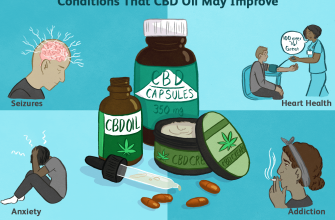Cannabinoids have been used medicinally for centuries, and in the last decade, attention has been focused on their wide therapeutic potential, especially in the control of seizures. Although some cannabinoids have shown anticonvulsant activity in experimental studies, their effectiveness in controlling clinical seizures has not been fully established. The purpose of this article is to analyze the findings of experimental and clinical studies on the effectiveness of cannabinoids in the suppression of epileptic seizures. There is currently preliminary evidence that non-psychoactive cannabinoids may be useful as anticonvulsants, but more clinical trials are needed to fully evaluate the efficacy and safety of these compounds for the treatment of epilepsy.
Historical Importance of Medical Marijuana
Over the past 60 years, experimental studies have shown the anticonvulsant properties of cannabinoids in a number of laboratory and natural experiments. In addition, there have been several clinical trials on the effectiveness of cannabinoids as anticonvulsants, although a recent review found only four studies that meet the criteria for eligible randomized controlled trials. The non-psychotropic cannabinoids CBD were found to reduce the occurrence of seizures, although the studies included in the review were of low quality due to insufficient experimental design, small patient numbers, and incomplete investigation of secondary features (responder rate, quality of life, and side effects). In addition, none of the four trials achieved the primary goal of being free of seizures for 1 year or more. Some epileptic patients have chosen to self-medicate with marijuana as a means of managing their condition, although this therapeutic effect is based solely on anecdotal evidence.
Historical and anecdotal evidence, as well as research confirming the therapeutic properties of cannabinoids, has led to an increase in the use of medical marijuana to control seizures. To date, in the US, legislation has advocated for the legalization/decriminalization of medical marijuana in 25 states and the District of Columbia. However, there is concern that the continued emergence of new strains of marijuana containing ever higher levels of THC could undermine its therapeutic potential and increase adverse effects, including the likelihood of increased seizures and psychosis. In terms of aftereffects, two recent studies have shown that recreational use of cannabis significantly increased the incidence of psychosis and was associated with younger people, while acute THC poisoning, after eating large amounts of cannabis, was the onset of severe psychosis, about as evidenced by a recent report on the case of a 34-year-old Colorado woman.
The role of cannabinoids in the control of synaptic transmission
The discovery of cannabinoid type 1 (CB1) receptors has spurred many scientific studies that have uncovered a complex, highly defined signaling system called the brain’s endocannabinoid system (ECS), a complex system of receptors in space and time involved in the continuous regulation/fine tuning of the synaptic transmission. The increase in the threshold of neuronal sensitivity is the result of forced synthesis and release of endocannabinoid anandamides or 2-arachidonoyl glycerol, which retrogradely activates the presynaptic part of CB1 and is then rapidly eliminated by the capture/degradation mechanism. Activation of CB1 can result in both the downregulation of protein kinase activity and the induction of mitogen-activated protein/extracellular regulated kinase to modulate a variety of downstream cellular processes and transcription factors. In addition, inhibition of adenylyl cyclase-induced cAMP production and activation of protein kinase A, inhibition of voltage-gated Ca2+ channels, and activation of K+ channels act as the main mechanisms underlying the on-demand regulation of synaptic transmission by inhibiting vesicular neurotransmitter release. It is the damping of excessive synaptic transmission by the ECS that underlies its function of regulating excitation and suppressing synaptic transmission.
Cannabinoids as anticonvulsants: experimental and clinical studies
CB1-dependent anticonvulsant mechanisms
One of the mechanisms underlying the anticonvulsant properties of cannabinoids is through their activation by CB1. THC, as well as a number of synthetic cannabimimetics, have shown CB1-dependent anticonvulsant effects in experimental models of seizures and epilepsy. In addition, experimental studies have shown that CB1 antagonism exacerbates the seizure activity of the epileptic phenotype. In connection with the previous findings, of great importance is the case report of a 52-year-old man with a history of adolescent idiopathic epilepsy who had not had a seizure for 20 years.
Following the inclusion of the CB1 antagonist rimonabant in an obesity treatment regimen, this individual developed nocturnal partial seizures, which disappeared and reappeared upon discontinuation and re-initiation of rimonabant therapy. These data suggest that CB1 agonists are effective as a potential anticonvulsant therapy. However, the exclusive use of a CB1 agonist as a therapeutic strategy is not feasible due to the presence of psychoactive effects, the potential for abuse, and the development of tolerance. In terms of later effects, experimental studies have shown that although CB1 activation has an anticonvulsant effect, long-term exposure to cannabinoids leads to an exacerbation of seizure activity, most likely as a result of receptor adaptation. Several clinical reports of recreational or medical use of cannabinoids have reported increased seizure severity after discontinuation of the drug or new onset seizures with cannabinoid-based drugs.
Expert opinion
The ECS is distributed throughout the nervous system, highlighting its role in regulating both physiological and pathophysiological synaptic transmission. In both experimental and clinical epilepsy, ECS brain plasticity is caused by a prolonged redistribution of forebrain CB1, which may function as a compensatory adaptation to control neuronal excitability. This hypothesis is supported by experimental data and anecdotal evidence that CB1 antagonists increase seizures14. Experimental data show anticonvulsant properties of exogenous cannabinoids, which are mediated by CB1 and non-CB1-dependent mechanisms. This property of cannabinoids is based on personal observations of epileptics who control their seizures by self-medicating with C. sativa. Cannabinoid-based anticonvulsants containing moderate levels of THC are unlikely to be approved due to their psychotropic side effects, abuse potential, and tolerance development. Therefore, self-medication with high THC C. sativa may be contraindicated for seizure control due to the potential for inadequate desensitization of CB1 function. Other experimental studies targeting brain ESC have controlled seizures by incorporating adjunctive CB1 agonist therapy with AEDs, focusing on the mechanisms of endocannabinoid uptake/degradation and modulation of ECS up/down in other neuronal transmitter systems. The anticonvulsant properties of the non-psychotropic cannabinoids, CBD, have been known for half a century, but only recently have their therapeutic potential in controlling pediatric seizures been discovered. Although a number of physiological effects of CBD in the brain have been identified, the mechanisms underlying its anticonvulsant properties have not yet been studied. Preliminary clinical results demonstrate the therapeutic potential of CBD for the treatment of drug-resistant seizures. Further research is ongoing to deepen our understanding of the brain’s ECS in the hope of developing new therapeutic strategies for the treatment of epilepsy and other neurological diseases.
Source: Wikipedia cbd





